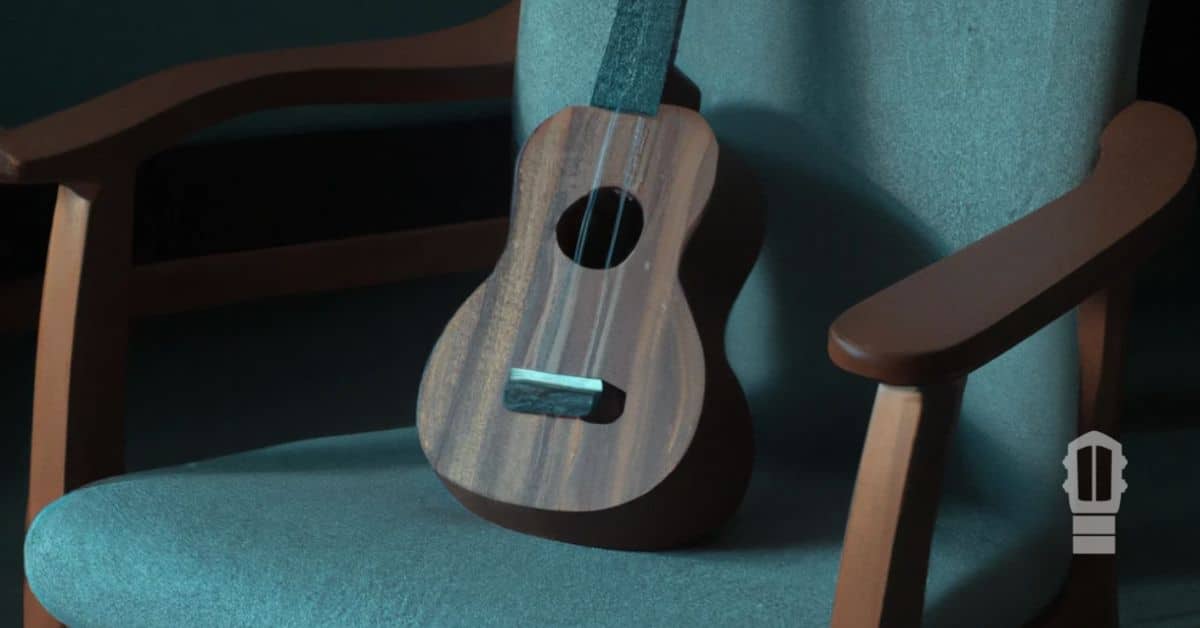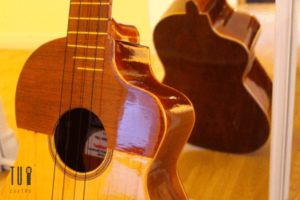Ukuleles are a popular and fun instrument to play, but picking a durable one can be tricky for beginners. You don’t need a high-end instrument to start learning, yet build quality still affects how it sounds and how long it lasts. This guide explains the differences between entry-level and premium ukuleles and gives you tips on choosing an instrument that will stand up to regular playing.
If you’re new to the instrument, check out our guide to the parts of the ukulele to understand how each component affects tone and durability.
Start with a More Affordable Ukulele
As a beginner, you don’t need to invest in a high-end ukulele right away. Start learning by playing simple songs on an affordable instrument. Songs like “Somewhere Over the Rainbow” sound just fine on a budget ukulele. After your skills and budget grow, you can upgrade to a higher-quality instrument.
Key Qualities of a High-End Ukulele
High-end ukuleles typically use high-quality materials and precise construction techniques. The result is superior sound quality, craftsmanship and playability compared to lower-quality instruments. Here are some key qualities of a high-end ukulele:
Better Sound Quality: High-end instruments use premium woods like koa or mahogany, producing a rich, resonant sound. Precise construction also leads to better intonation and overall sound quality.
The type of wood used in the construction of a ukulele can significantly affect the instrument’s sound. Different woods can produce different tonal characteristics, such as brightness, warmth, sustain, and projection.
To get familiar with how each part contributes to the sound, you can explore our detailed ukulele anatomy lesson.
Higher Level of Craftsmanship
Skilled luthiers build high-end ukuleles using quality materials and careful attention to detail. This craftsmanship results in finely tuned, well-made instruments.
Better Playability
Premium ukuleles are designed with the player in mind and are built to be comfortable and easy to play. Features like a well-shaped neck, smooth and precise fretwork, and quality tuning machines make the instrument more enjoyable.
Tips for Selecting a Durable Ukulele
When selecting a durable ukulele, consider the following tips:
Assess the Materials: Look for a ukulele made with high-quality woods and materials that can withstand wear and tear over time.
Inspect the Construction: Examine the instrument carefully to ensure it is well-made and has no defects or cracks that could worsen over time.
Test the Playability: Play the instrument before buying to ensure it feels comfortable and easy to play.
Taking Care of Your Ukulele
Even a high-end ukulele can be damaged or broken if not handled and stored correctly. To extend your ukulele’s lifespan, make sure to:
- Keep it in a case when not in use.
- Clean it regularly with a soft cloth.
- Avoid exposing it to extreme temperatures or humidity.
By following these tips and taking good care of your ukulele, you can ensure that it will remain durable and provide years of enjoyment.
What Are Ukuleles Made of?
Ukuleles are typically crafted from a variety of tonewoods. Traditional Hawaiian instruments use koa, a native wood that produces a bright yet warm sound and striking grain patterns. Mahogany is another popular material that delivers a warm, mellow tone and tends to be more affordable. Spruce and cedar are often used for the soundboard to add volume and clarity, while maple can create a crisp, bright sound. Some entry level instruments use laminated woods or composite materials to keep costs down while still offering decent durability. When you’re evaluating ukulele materials, remember that each wood type shapes the instrument’s sound, weight, and look, so choose one that matches the tone you’re after.
Best Wood for a Ukulele
Many players wonder what the best wood for a ukulele is. The answer depends on your preferred tone and budget. Koa is prized for its rich, balanced sound and beautiful grain, but it’s often more expensive and reserved for higher‑end instruments. Mahogany offers a warm, resonant tone with good sustain and is widely used in mid‑range models. Spruce tops are common on ukuleles that need extra projection, pairing nicely with darker woods like mahogany for clarity and volume. Cedar delivers a softer, more mellow sound that’s responsive to a lighter touch, while maple produces a bright, articulate tone with a striking look. Ultimately, there is no single “best” wood — try different materials to discover which sound and feel you prefer.
Affordable Ukulele Options
If you’re looking for a durable ukulele on a budget, consider instruments made from laminated woods or composite materials. These materials are more resistant to temperature and humidity changes and can handle daily use, making them ideal for students and travelers. Affordable mahogany or spruce models from reputable brands often offer a good balance of tone and price. Pay attention to build quality, string action and fretwork to ensure playability. Even entry‑level ukuleles can sound great and last a long time if you choose one made from quality materials and take proper care of it.







































